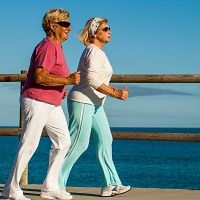Home Exercise Reduces Hopelessness in Patients with Coronary Heart Disease
A study presented at the American Heart Association (AHA) Scientific Sessions 2014 reported home exercise could potentially alleviate feelings of hopelessness in people afflicted with coronary heart disease.

The presence of hopelessness is associated with increased morbidity and mortality in patients with coronary heart disease (CHD), independent of depression.
A study presented at the American Heart Association (AHA) Scientific Sessions 2014 reported home exercise could potentially alleviate feelings of hopelessness in people afflicted with coronary heart disease.
Feeling hopeless can unfortunately often be dangerous discouraging people from healthy life choices. Furthermore, people experiencing hopelessness often suffer from depression as well.
Researchers determined the effects of regular exercise on hopelessness levels in a total of 324 subjects (the average age 66, 33% women and 93% white) with CHD. Subjects completed the State-Trait Hopelessness Scale, the tool measuring “state” hopelessness, which is how pessimistic and helpless patients feel currently, and “trait” hopelessness, which captures how patients typically feel over much longer periods.
Additionally, the participants were provided an exercise questionnaire measuring the frequency of walking or biking in a home or hospital setting.
Results for the year long duration found those who walked or biked at home at least 3 days a week experienced a 12% reduction in state hopelessness scores, even when considering relevant variables including age, participation in hospital-based exercise, and factors of depression.
Susan L. Dunn, PhD, RN, the study’s lead author as well as a professor of nursing at Hope College Holland, Michigan commented, “For the first time, we show the beneficial effect of exercise in helping patients to feel more hopeful. With home exercise, patients are likely thinking more positively about the future and feeling more capable of making positive changes for a healthy lifestyle. “
While she was surprised to find hospital-based cardiac rehabilitation exercise didn’t impact current hopelessness, Dunn surmised the home exercise perhaps raised the patients’ sense of empowerment.
Dunn commented, “All patients should be encouraged to participate in a regular exercise program. Special encouragement is needed for patients who are moderately to severely hopeless, as they may be the most vulnerable and the least likely to exercise, yet benefit the most.”
As the main limitation of the study was that some patients, who felt the most hopeless, dropped out over time, further research is necessary to evaluate how patients with hopelessness can be motivated to exercise at home.